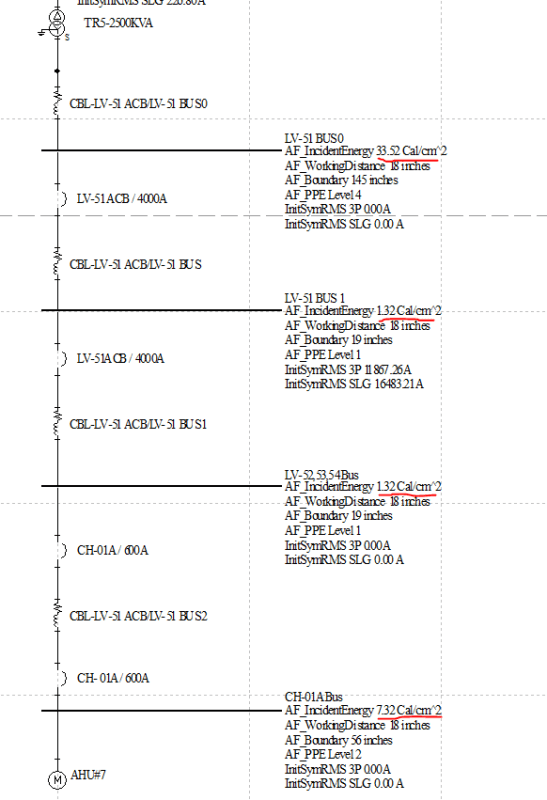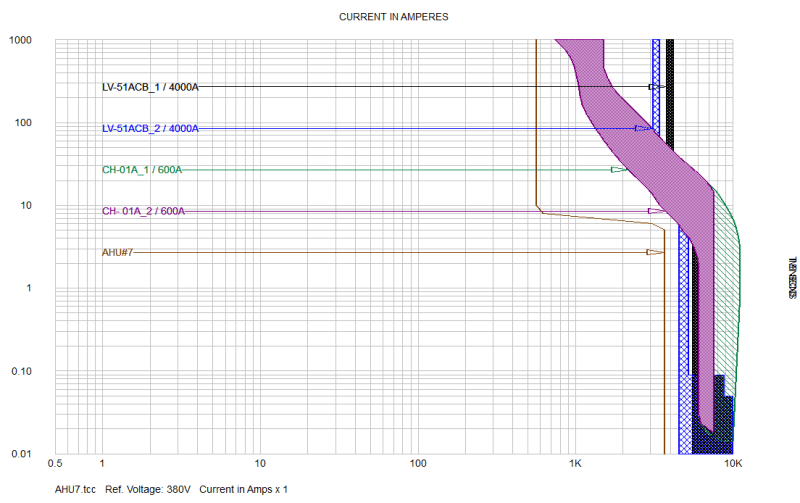FrankieAugust
Electrical
Hi all,
I am new to SKM and arc flash analysis. I am currently trying to convert a project from ETAP to SKM PTW. After did the conversion and run the analysis, the result puzzle me.
The result after transformer is 33.52 Cal/cm^2. After the LV-51ACB, the AF IncidentEnergy dropped to 1.32 Cal/cm^2. But, the last bus (CH-01A) result given is 7.32 Cal/cm^2. I expect the last bus result should be lower than 1.32 Cal/cm^2? I attached the TCC drawing and the 1 line diagram in this question.
Can someone help to clear my doubt?
1. After LV-51ACB, the AF incident energy dropped from 33.52 to 1.32, is it correct?
2. Why the last bus AF IE higher than 1.32 Cal/cm^2? What is the logic behind?
Many thanks.


I am new to SKM and arc flash analysis. I am currently trying to convert a project from ETAP to SKM PTW. After did the conversion and run the analysis, the result puzzle me.
The result after transformer is 33.52 Cal/cm^2. After the LV-51ACB, the AF IncidentEnergy dropped to 1.32 Cal/cm^2. But, the last bus (CH-01A) result given is 7.32 Cal/cm^2. I expect the last bus result should be lower than 1.32 Cal/cm^2? I attached the TCC drawing and the 1 line diagram in this question.
Can someone help to clear my doubt?
1. After LV-51ACB, the AF incident energy dropped from 33.52 to 1.32, is it correct?
2. Why the last bus AF IE higher than 1.32 Cal/cm^2? What is the logic behind?
Many thanks.





